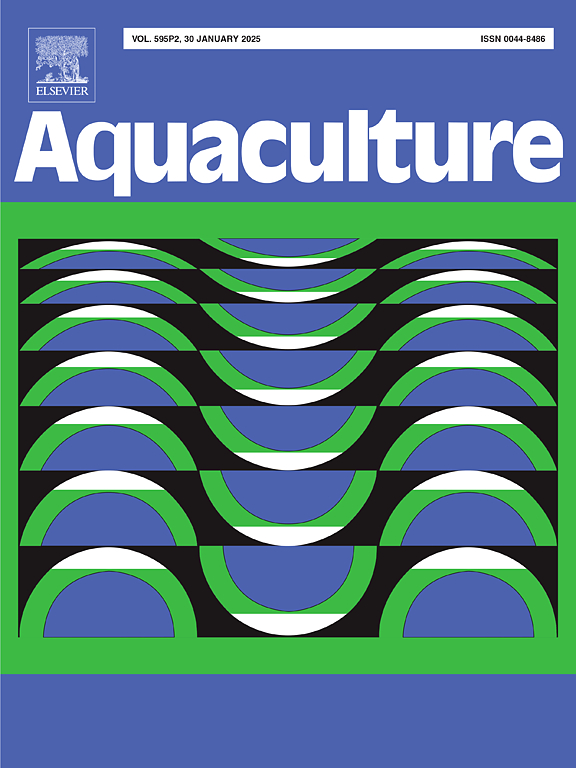Development of a duplex fluorescent in situ hybridization (FISH) technique to detect and localize Redspotted Grouper Nervous Necrosis Virus sense and antisense genomic RNA1 and its application to the tissues of aquatic vertebrates and invertebrates
IF 3.9
1区 农林科学
Q1 FISHERIES
引用次数: 0
Abstract
The causative agent of viral encephalopathy and retinopathy (VER), the nervous necrosis virus (NNV), is considered one of the most impacting agents in the Mediterranean aquaculture and it has already been described in several aquatic vertebrates and invertebrates including bivalve molluscs.
In this study a novel duplex fluorescent in situ hybridization (FISH) assay was developed for the detection of sense and antisense RGNNV genomic RNA1 fragment, coding for the RNA-dependent RNA polymerase (RdRp), and applied to aquatic vertebrates and invertebrates' tissues. The detection of sense and antisense RNA provides useful information not only on viral localization at cellular level, but also on viral replication, improving the understanding of the host-pathogen interactions between NNV and its hosts.
The designed assay resulted in the specific detection of the RdRp of the two NNV strains most widespread in the Mediterranean basin: RGNNV and RGNNV/SJNNV.
FISH was applied to the brain of European sea bass (Dicentrarchus labrax) showing the localization at cellular level of both NNV genome and cRNA produced during viral replication.
The assay was also able to localize the NNV genome and its replicative intermediate form in clams (Ruditapes philippinarum). Clear positive signals were found in oocytes' cytoplasm confirming the intracellular localization of NNV in invertebrates. Altogether, these findings suggest NNV active replication status in clams' oocytes and its potential transmission through vertical route. In conclusion, the developed assay can find wide application in the deep understanding of host-pathogen interactions, contributing to pointing out the real role that invertebrates play in VER epidemiology.
求助全文
约1分钟内获得全文
求助全文
来源期刊

Aquaculture
农林科学-海洋与淡水生物学
CiteScore
8.60
自引率
17.80%
发文量
1246
审稿时长
56 days
期刊介绍:
Aquaculture is an international journal for the exploration, improvement and management of all freshwater and marine food resources. It publishes novel and innovative research of world-wide interest on farming of aquatic organisms, which includes finfish, mollusks, crustaceans and aquatic plants for human consumption. Research on ornamentals is not a focus of the Journal. Aquaculture only publishes papers with a clear relevance to improving aquaculture practices or a potential application.
 求助内容:
求助内容: 应助结果提醒方式:
应助结果提醒方式:


